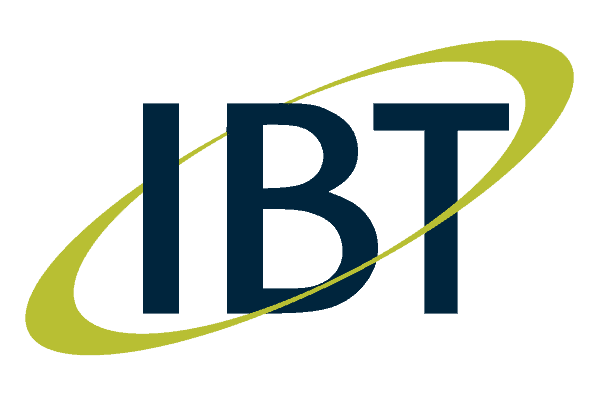Why the merger between Attunity and Qlik is good news
The beginning of February saw the end of a brand name that, for IBT, has become synonymous with efficient data management and replication since becoming a partner in 2015.
The Attunity name was retired last week after its acquisition by Qlik, but their products – and Gold Client – live on as part of Qlik’s Data Integration Platform. Considering IBT has implemented and supports the majority of Attunity customers in Australia, what does this mean to them and what will happen to the products that have grown exponentially over the last few years?
Before I answer these questions, let’s take a step back to early 2019 and what transpired in March. Attunity had just released some impressive growth figures for 2018, such as year-on-year license revenue growth of 67% and total revenue growth of 47%. Its new product to automate and orchestrate the set-up of data lakes had been proven a success and its flagship product, Replicate, was still going from strength to strength with more than 2,500 customers. They had also moved away from perpetual licenses and changed to a subscription service, all of which attracted the attention of Qlik, and perhaps it’s owner, Toma Bravo, a tech focused private equity firm.
Qlik had been struggling to find a differentiating factor since the heady days of 2014/15 when their business intelligence and analytics products had taken the world by storm. It was a novel approach and users lapped it up. However, with the advent of Tableau and eventually Power BI, things became a little less clear. All were great products, but many consumers could not find a compelling reason to choose Qlik over the two new upstarts. Therefore, price became the differentiator and, with Microsoft on the scene, there was only going to be one winner. Hence, Tableau is no longer independent, being snaffled by Salesforce last year, so Qlik needed to find a solution to this dilemma.
Qlik’s product line included Sense, View, Big Data Index and a new data cataloguer called Data Catalyst (itself another acquisition by Qlik in 2018). because of its Associative engine, Sense took it further and was fantastic for visualisations and spoke to the need for business use cases, rather than via IT. Big Data Index used the same Associative model but for very large data sets and while Data Catalyst was still too new to make much difference, Qlik knew they needed something more, and looked towards the back end. What if there was a real time data capture tool that could seamlessly work with these products. What if there was a way to automate data warehouses or lakes so that the Qlik product range could effortlessly build meaningful insights in seconds? What they needed was a tool that was heterogenous, that made imperceptible impact on transaction systems and was affordable.
Why did Qlik choose Attunity?
They chose Attunity because it was the pioneer of real time log-based change data capture. Its technologies were used in many of its competitors’ products including Oracle, Microsoft, even AWS, and it was agnostic in terms of presentation layers it worked with. Almost AUD$850m and nine months later, enter the Qlik Data Integration platform that provides cross-platform data integration and streaming capabilities to support a shift to cloud and real-time analytics and “accelerating (an) enterprises ability to turn raw data into shared insights across the organization.”
How does this affect our customers?
What does this all mean to Attunity’s existing customers? Well nothing really. It is business as usual. The Attunity suite of products will remain agnostic. Meaning they are not tied to specific endpoint technologies, such as Oracle, IBM, SAP or Microsoft, nor are they tied to Qlik’s product range. Customers can choose from any BI/Analytics tool available today and can simply decide that they only need the data replication piece, or the data lake automation tool. Of course, the benefits of utilising the full platform from data ingestion to visualisation are many – be it ease of use, one single vendor to deal with or seamless integration between all tools, to name a few.
The same support structure has remained intact too, so that customers can continue to enjoy Attunity’s hassle-free, flexible way of working and we, as the previously authorised partner for Australia, continue to work with our customers in exactly the same way as before. In fact, we are beginning to see some of the fruits of the deal in terms of additional headcount and a focus on the Australian market.
We also expect greater investment in the suite of tools, with even more endpoints supported. Furthermore, now that we can actually see the end game, that is the gold lining in customer data visualised and optimised for business users that provide associations previously reserved for only the largest corporations, it gives us more impetus to help our customers derive every ounce of value from their data.
Qlik’s partners too provide a wealth of information, skills and services that we can take advantage of. Already, we are jointly working on projects that our customers and prospects can benefit from. They are customer-centric and, like us, have developed long term relationships that have proven insightful and successful. They are respected by Qlik and this says a lot to us and has eased any fears we may have had regarding the take-over.
So Attunity is dead. Long live Qlik!
Mike Hollobon heads business development for IBT, previously an Attunity Gold Partner and authorised partner for Attunity products in Australia since 2015. IBT are now a Qlik Elite partner.



Leave a Reply